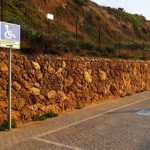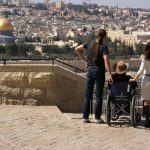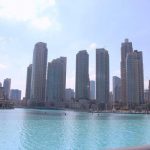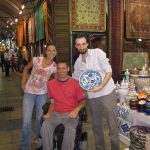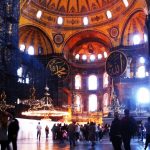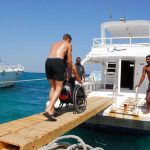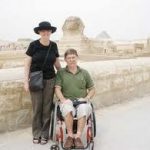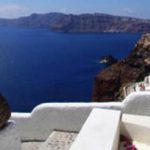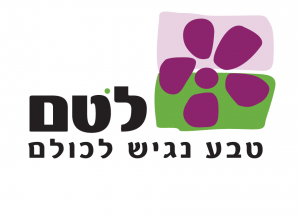 LOTEM is the leading organization in Israel making hiking trails and nature accessible to everyone. “Being disabled does not prevent someone from leading an active, fulfilling life, especially with the support of organizations like LOTEM,” said Danielle Hankin, President, JNFuture Philadelphia.
LOTEM is the leading organization in Israel making hiking trails and nature accessible to everyone. “Being disabled does not prevent someone from leading an active, fulfilling life, especially with the support of organizations like LOTEM,” said Danielle Hankin, President, JNFuture Philadelphia.
The following interview is with Gaylee Schif, Jewish National Fund-USA LOTEM Liaison.
1. Approximately how many people are living in Israel that will benefit from accessible parks?
For accessibility needs, we consider about 18% of the population in Israel to have special needs. It should be taken into account that different people have different accessibility requirements even if they do not have special needs, for example older people who need movement assistance.
2. Why is it important to make parks wheelchair accessible in Israel? What are the physical, mental, and spiritual benefits?
Going out into nature for every human being is a healing thing that expands the mind, even more so for people with disabilities who might not be as active in their everyday lives. In addition, the ability to be like everyone else, to be part of society, to meet society in a pleasant, empowering, egalitarian place, is a healing thing in itself.
3. What does an accessible park look like? What features are incorporated to create access for people who have wheelchairs. For example, toilets, picnic tables, hiking trails, and camping sites.
All the things you mentioned – toilets, picnic tables, hiking trails and campsites – are important, but also accessible seating for those who have difficulty walking, accessible fountains, accessible playgrounds, an accessible map to understand the place, etc. It’s important that the place doesn’t look like an accessible hospital, but the entire design should be inclusive so that everyone will be comfortable in it.
4. What tools are used to create access for all? Will you be using any digital tools to assist people? Closed caption videos, lifts/hoists, screen readers, informational boards with push-button or barcode scan? Things like that.
If it’s a matter of visual and hearing impairments, for example, or cognitive impairments, then technology is important. In these cases, we have many technological options that can be adapted to different places. Of course, the location and whether the space is indoors or open will affect the choice of options, as well as the number of users and the purpose of use. Today, many technological solutions can be found, from audio broadcasts and accessible orientation maps to more complex tools for illustration and explanation.
5. How many parks will be modified for wheelchair access? Where will people be able to read details about wheelchair access at these parks to plan a trip?
The accessibility of this information is quite problematic in Israel. There is currently no website or place that centralizes all this information, unfortunately. There is a lot of information on both our website and the Nature Authority in Israel. In addition, there are Facebook pages that have been opened that contain interactive information from guides, travelers, educators, professionals, and more. One of our employees, who is himself paralyzed and restricted in movement, runs a blog on this subject and plans to open a website that will gather all the information regarding the accessible places and the degree of their accessibility in Israel.
6. Will there be any organized group hikes or activities planned in the park? Like a ranger-led hike?
We at LOTEM, a Jewish National Fund-USA affiliate, have continued our travel routine in Israel throughout the year, though we have complied with the various guidelines and restrictions due to the pandemic.
Our trips take place all over the country to diverse groups with varying levels of accessibility. When there is a group of hikers who need a special wheelchair that can move on any road sign, we have five such chairs, donated to us through JNF-USA, that we can use for hiking accessibility.

